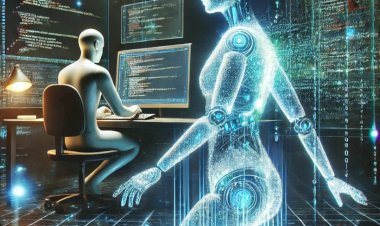Tools, Tricks, and Future Aspects in Cybersecurity
Discover the latest tools and tricks to improve cybersecurity and stay ahead of evolving threats. Explore future aspects of cybersecurity, including AI, blockchain, and quantum computing.
As the world becomes more digitized, the importance of cybersecurity is becoming increasingly evident. The threat of cybercrime is real and growing, and organizations need to stay ahead of the curve by adopting the latest tools, tricks, and best practices in cybersecurity. In this article, we will explore some of the top tools and tricks that can help organizations improve their cybersecurity posture, as well as some of the future aspects of cybersecurity to keep an eye on.
Tools in Cybersecurity
-
Endpoint Detection and Response (EDR): EDR solutions are designed to detect and respond to advanced threats that traditional antivirus software may miss. These tools use advanced analytics and machine learning algorithms to identify and mitigate potential threats.
-
Vulnerability Scanners: Vulnerability scanners are automated tools that can scan computer systems, networks, and applications for potential security weaknesses. These tools can help organizations identify vulnerabilities before they can be exploited by malicious actors.
-
Network Access Control (NAC): NAC solutions can help organizations control access to their network by ensuring that only authorized devices and users are allowed to connect. These tools can also enforce security policies, such as requiring the use of strong passwords and multi-factor authentication.
Tricks in Cybersecurity
-
Social Engineering: Social engineering is the use of psychological manipulation to trick people into divulging sensitive information or performing actions that can compromise security. This can include tactics such as phishing emails, phone calls, or fake websites. Organizations can mitigate the risk of social engineering by educating their employees about the risks and implementing security policies and procedures.
-
Two-Factor Authentication (2FA): Two-factor authentication is a security measure that requires users to provide two forms of authentication to access a system or application. This can include something the user knows (such as a password) and something the user has (such as a token or mobile device).
-
Patch Management: Patch management is the process of keeping computer systems and applications up-to-date with the latest security patches and updates. This can help organizations mitigate the risk of vulnerabilities being exploited by malicious actors.
Future Aspects in Cybersecurity
-
Artificial Intelligence (AI): AI has the potential to revolutionize cybersecurity by automating tasks such as threat detection and response. AI-powered tools can learn from past attacks and identify patterns and anomalies that can indicate potential threats.
-
Blockchain: Blockchain technology can provide a secure and decentralized way to store and share sensitive data. This technology has the potential to transform industries such as finance, healthcare, and supply chain management.
-
Quantum Computing: Quantum computing has the potential to break many of the encryption methods currently used to secure data. As quantum computing becomes more powerful, organizations will need to develop new encryption methods that can withstand these attacks.
Conclusion
As the threat of cybercrime continues to grow, organizations need to stay ahead of the curve by adopting the latest tools, tricks, and best practices in cybersecurity. This includes using tools such as EDR, vulnerability scanners, and NAC, as well as implementing security policies and procedures such as social engineering awareness, two-factor authentication, and patch management. In the future, technologies such as AI, blockchain, and quantum computing will continue to shape the cybersecurity landscape, and organizations will need to adapt to these changes to stay secure.

 Ashish Kumar
Ashish Kumar 














